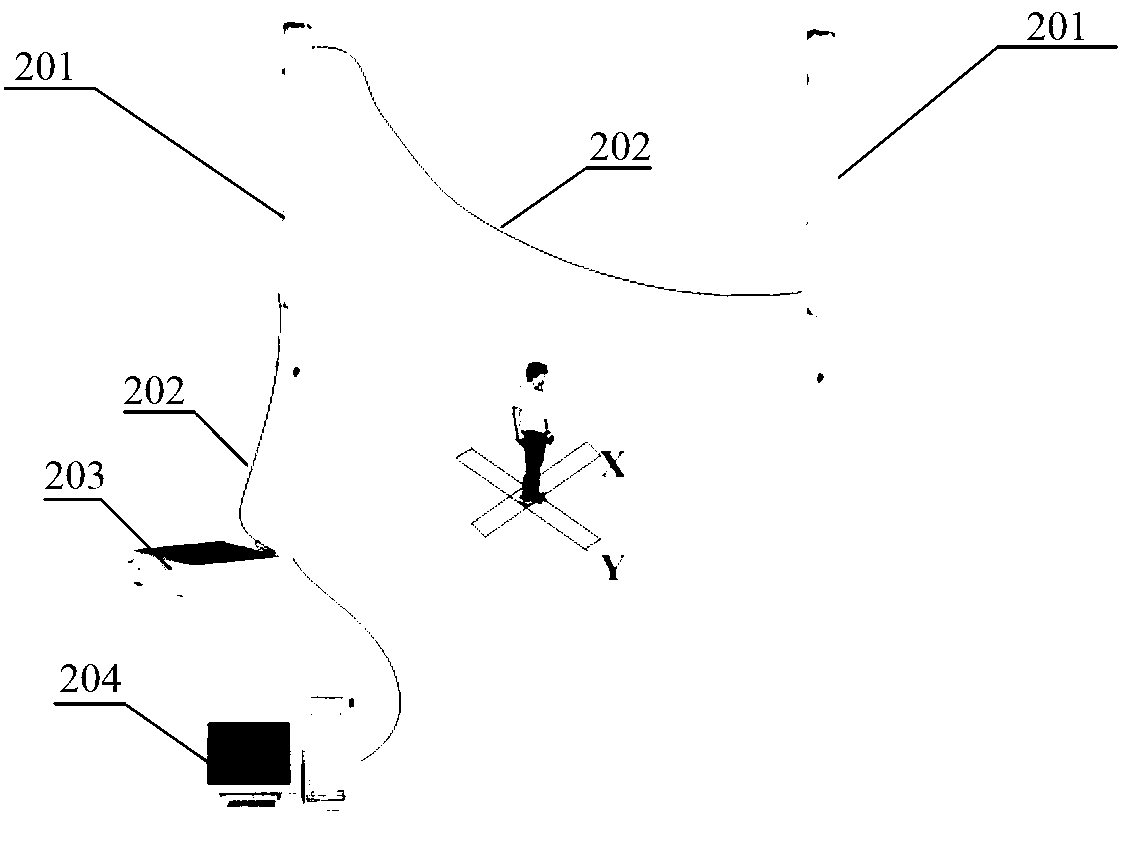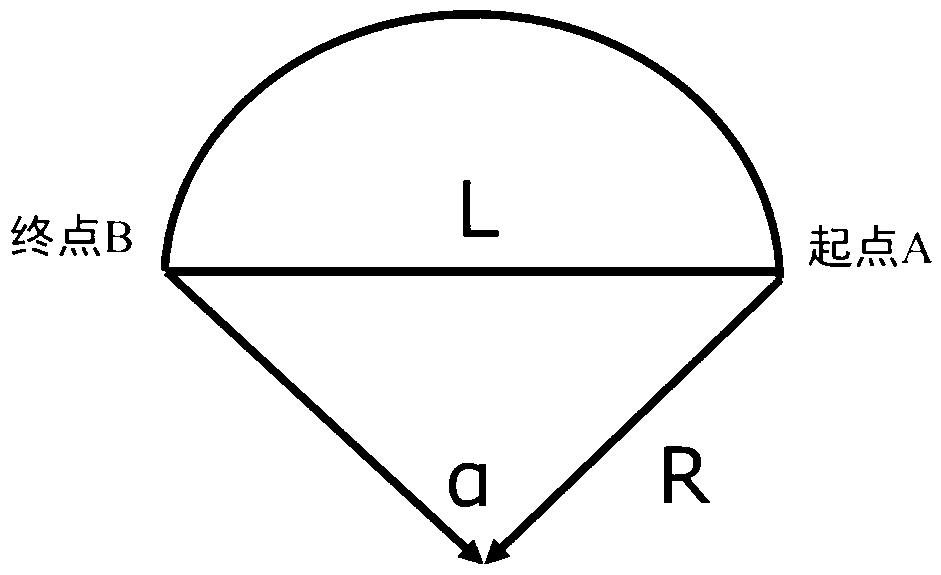Human joint angle measuring method based on feature point space position
A technology of joint angles and human joints, applied in diagnostic recording/measurement, medical science, sensors, etc., can solve problems such as slow calculation speed, error, and large workload of test assistance, and achieve good repeatability and high precision.
- Summary
- Abstract
- Description
- Claims
- Application Information
AI Technical Summary
Problems solved by technology
Method used
Image
Examples
Embodiment 1
[0038] Embodiment 1: Measurement of the forward flexion angle of the subject's neck joint
[0039] Follow these steps:
[0040] (1) The main tester presses figure 2 According to the requirements shown, the two motion capture system lenses 201 are placed at a distance of at least 3.5m, and a point is determined on the central vertical line of the two lenses, so that this point is 120° from the line connecting the two lenses. Paste a crosshair at this point so that the short axis of the crosshair is perpendicular to the line connecting the two lenses, and let the subject maintain a standing posture according to the test requirements.
[0041] (2) After the connection is completed, turn on the power supply, calibrate the motion capture system, and unify the coordinates to the cross line, and the cross point of the cross line is the coordinate origin, such as figure 2 As shown, the short axis is the X axis and the long axis is the Y axis.
[0042] (3) The subject faces the Y-...
Embodiment 2
[0047] Embodiment 2: Measurement of the left-rotation angle of the subject's neck joint
[0048] Follow these steps:
[0049] (1) The main tester presses figure 2 According to the requirements shown, the two motion capture system lenses 201 are placed at a distance of at least 3.5m, and a point is determined on the central vertical line of the two lenses, so that this point is 120° from the line connecting the two lenses. Paste a crosshair at this point so that the short axis of the crosshair is perpendicular to the line connecting the two lenses, and let the subject maintain a standing posture according to the test requirements.
[0050] (2) After the connection is completed, turn on the power supply, calibrate the motion capture system, and unify the coordinates to the cross line, and the cross point of the cross line is the coordinate origin, such as figure 2 As shown, the short axis is the X axis and the long axis is the Y axis.
[0051] (3) The subject faces the Y-ax...
PUM
| Property | Measurement | Unit |
|---|---|---|
| Brightness | aaaaa | aaaaa |
Abstract
Description
Claims
Application Information
 Login to View More
Login to View More - R&D
- Intellectual Property
- Life Sciences
- Materials
- Tech Scout
- Unparalleled Data Quality
- Higher Quality Content
- 60% Fewer Hallucinations
Browse by: Latest US Patents, China's latest patents, Technical Efficacy Thesaurus, Application Domain, Technology Topic, Popular Technical Reports.
© 2025 PatSnap. All rights reserved.Legal|Privacy policy|Modern Slavery Act Transparency Statement|Sitemap|About US| Contact US: help@patsnap.com



